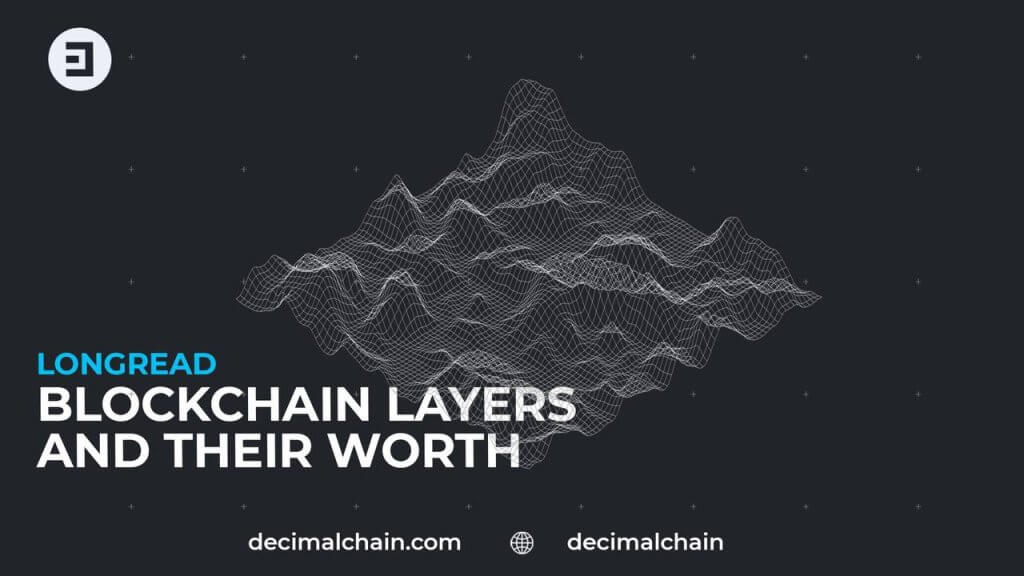Layers of blockchain
Everything in the world has a structure, architecture and design. The architecture is often represented by a hierarchical layer system, where each layer has its features and functions. The same system is present in today’s technological innovations. For example, blockchain layers, what they are for and what they are, will be explained in this article.
Layer 1
The more common names are L1, L2, L3 and so on. In essence, «layers» is the figurative name for the protocols and sidechains of the main network — the mainnet. They are additional tools of the mainnet to solve certain tasks, mainly to scale. According to the blockchain trilemma, building a network with equally high levels of decentralisation, security and scalability is theoretically possible. But this appears not to be the case, and blockchain has only two of the three characteristics. To increase decentralisation/security/scalability, a protocol called a sidechain is developed. There are several Layer 2 chains differentiated:
- State Channels — the exchange of off-blockchain transactions, after which the result is written to the blockchain itself (usually implemented by a multi-signature smart contract)
- Nested blockchains — operation of an L2 blockchain (more scalable, e.g. due to a less secure consensus mechanism) on top of an L1
- Rollups — combining multiple transactions and processing them in an L1 network
- Sidechains — a hybrid of a nested blockchain and a state channel, used to process a large number of transactions at once.
In a Decimal blockchain, there is only one mainnet, in other words, an L1 blockchain. Its maximum throughput is 10,000 transactions per second. The Decimal Smart Chain will also present a separate, one-layer smartchain, with the main function of utilising the power of smart contracts and creating dapps based on them. That is, at its core, the Decimal blockchain is a complete system that combines solutions from all levels. At the same time, Decimalchain is an L1 blockchain and a complete network.
Sidechain
The sidechain is a separate blockchain that is simply interconnected with the mainnet. Its function is to record transactions separately from the mainnet and then transfer them to the mainnet as far as possible. Imagine a situation when you drive a car from a non-main road, but you must drive onto the main road with heavy traffic. Unless the cars on the main road stop or give way, you will not be able to exit, in other words, you need permission. The sidechain may have its own different or similar consensus algorithm. Either way, when recording transactions that have passed on the second layer are checked for authenticity by the mainnet as well.
Many blockchains, especially generations 2 and 3, have multiple sidechains to help them operate. For example, PoW-based chains do not have high capacity and because of that the data transfer performance suffers, the number of participants in the chain and the cost of maintaining the mining equipment is expensive, as in the case of the bitcoin blockchain on the first PoW consensus created. The cost of mining increases over time due to the complexity of the consensus tasks to be done. In an attempt to solve this issue, the Lightning Network was created to help with the scalability issues of first-generation blockchains like bitcoin and litecoin. One of the most important developments in cryptocurrency recently occurred, and that is Ethereum’s transition to the PoS algorithm. Technically, this merges two independent networks in the same ecosystem.
DSC
The release of the Decimal Smart Chain is just around the corner. DSC could be called a fork. A fork is a significant change and improvement to the core chain. But it was possible if the team decided not to replicate all the functionality and the entire transaction base from the old version to the new one. So DSC is a separate smartchain and a major upgrade, with full support for all previous functionality. Ethereum has done a similar fork. The consensus algorithm remains the same as the mainnet, Delegated Proof of Stake, but there will be many more features to create on the smartchain. In White Paper 2.0, an entire chapter is devoted to DSC, where each part has a detailed description of all possible features. Apart from the basic functionality that was described already in the first part and implemented in the meantime, with the DSC release the functionality will be expanded qualitatively and quantitatively. DEX by Decimal is already in the last stages of development and is being worked on by a development partner team. The Launchpad is already up and running, and the first projects have already left applications on it.
Blockchain layers are designed to simplify communication between networks. They should not be mistaken for bridges, as layers are individual blockchains built in the same ecosystem and on top of the underlying network. Sidechains interact with the mainnet to improve the performance of the network if this was not initially possible. Therefore, the creation of additional layers and branching from the main chain indicates a more pointed and narrowly focused change and evolution in the blockchain.
